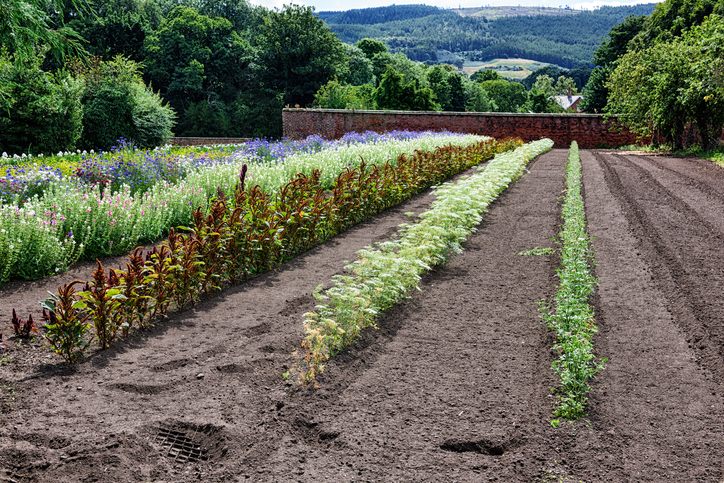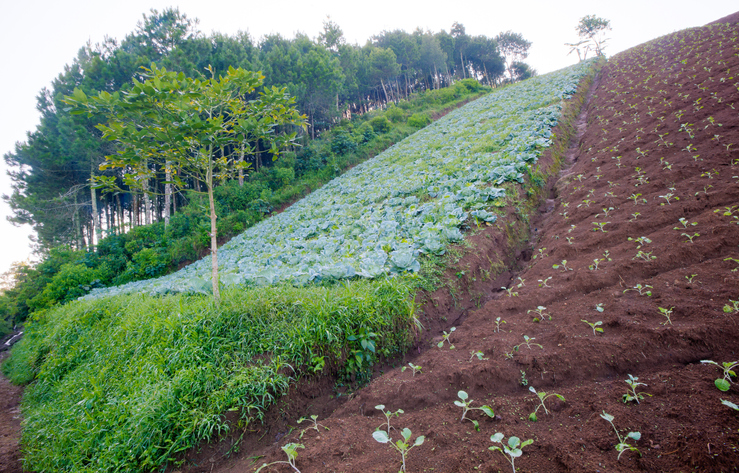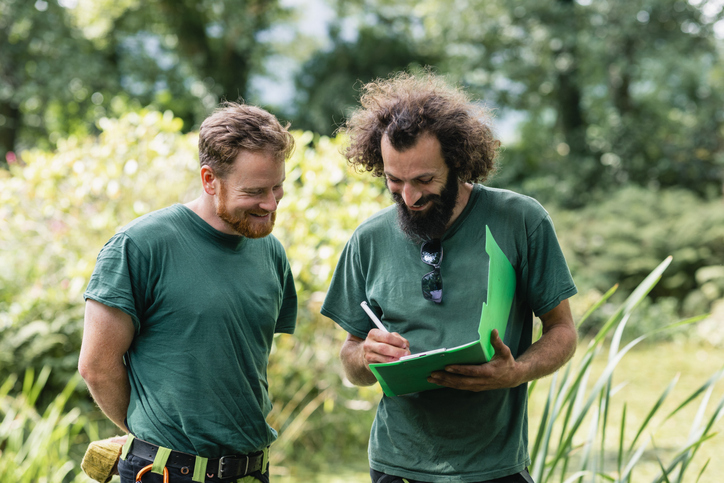02/03/2022 - Hélène de Reforest'Action
In addition to increasing agricultural yields, the trees planted in an agroforestry project provide an array of environmental and social services: better carbon storage in agricultural land, water filtration, soil conservation, increased biodiversity, landscape improvement, etc.
Once common in Europe, the method gradually disappeared over the 20th century as agriculture became more intensive and increasingly mechanised. Today, a better understanding of the benefits of trees planted in farming areas has revived interest in agroforestry, in a global context of action against climate change.

Agroforestry combines trees and crops or animals on the same plot of land.
Agroforestry: why plant trees in agricultural areas?
Planting trees on farmland increases biological diversity within the plots concerned, optimises the environment’s resources and creates a microclimate that is particularly conducive to crop productivity.
Thanks to the root system of the trees, established at various depths underground, better conditions can be created for the supply of water and minerals to the crops.
Helping to conserve ecosystems through agroforestry
Not only is agroforestry profitable in terms of yield, but the trees planted also provide many ecological benefits. Their presence helps to restore soil fertility and slow down the erosion that often goes hand in hand with soil exploitation.
The trees serve as filters, improving water quality and thus reducing groundwater pollution. They also contribute to greater biodiversity, which is vital to the health of the various ecosystems. This is because they provide habitats for a diversity of fauna that assist in pollination and pest control, and in doing so help to restore ecological continuity within the plots.
Reducing the environmental footprint of agricultural land
The establishment of agro-ecosystems helps reduce the carbon footprint of agricultural land. In fact, planting trees increases the carbon storage capacity of the biomass, which helps regulate the climate and contributes to the fight against climate change. It also reduces the need for fertilisers and other crop protection products.
Benefits of agroforestry for the environment and people

In terms of landscape, planting trees on agricultural plots helps create cooler areas for animals and people living in the vicinity, while enhancing the rural landscape. This improves the living environment and contributes to the development of the regions and their territories.
In the long term, the production of food products from forestry helps improve food security for the population, creates jobs in rural areas and opens the door to new types of activity such as agritourism.
How do you start out with agroforestry?
There are several aspects to take into account and the project should be clearly defined before you start planting trees on a farm plot.
Identify the beneficiary’s needs
The establishment of an agro-ecosystem depends on the type of farm and the agricultural approach adopted by the producer. Depending on the type of project (cereal farming, livestock farming or wine-growing), the issues will not be the same.
The intention to plant trees in an agroforestry approach can have several objectives, e.g. improving the living environment for livestock, diversifying production, protecting natural resources, improving the ecosystem properties of plots or developing timber production in the medium or long term.
What constraints does a farmer face in agroforestry?

Agroforestry management requires a sound understanding of how the farm plot fits in with the surrounding area. The project must be designed in harmony with the fixed elements of the landscape around the plot, such as watercourses, forests, meadows, and so on.
Secondly, you should enquire about local territorial policies concerning the environment, carbon plans and sustainable agriculture.
Choosing which species to plant
Selecting which species to plant is one of the most important steps. It is recommended to choose a mixture of species adapted to the environmental conditions and whose growth will be compatible with the space set aside for the plantation.
The shape and orientation of the plots and the space needed between rows of trees must also be taken into account. Finally, you should not overlook how the project will be financed. Public or private aid may be available to help bring the project to fruition.
Funding available from Reforest’Action for agroforestry projects
Reforest’Action finances projects to preserve, restore and create forests around the world. Directly aligned with the realities on the ground and with agricultural systems, our personalised project creation approach lets you adapt your supply chains in a context of climate change.
To obtain funding for your agroforestry project, get in touch!

0 Comment